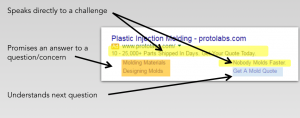What Community-Owned Models Will Look Like, How Your Business Can Prepare
The universal business model has historically been a function of the technology available and the dominating networks at the time. And the rise of the web3, social media and online, shared ownership communities are ushering in the next evolution of the business model — one built around community.
This shift has profound implications for businesses that boardrooms, leadership and other stakeholders should already be discussing.
The broker-dealer model relied on the now-extinct middleman
If you were starting a business — say, an insurance business — in the 1920s, you would start by building out a network of brokers and agents to sell insurance policies. You lean on this middle layer to reach your customers and communicate your product’s value.
This approach was core to how most businesses operated for the greater half of the 20th century — whether it was car dealers, real estate brokers, or retail shopping (vis-à-vis malls). This all changed as we moved into web2 in the early 2000s.
Companies dependent on brokers, dealers or a middle layer updated their business model to reach customers directly through websites and then apps.
The D2C model takes leverage of social media and lower-funnel marketing
Companies that thrived during the last 15 years learned to use lower-funnel marketing strategies and relied on social and search to reach, engage and convert customers. The D2C model came to dominate the landscape, widely recognized as the most efficient and effective way to build businesses.
During this era, consumers sold their data to big companies like Meta and Alphabet for free internet services like connecting with friends or searching the web. These companies sold audiences to brands that happily paid to reach customers they couldn’t otherwise reach.
The problems surfaced during the golden era of web2 are well documented: algorithms designed to reward sensationalism; privacy tradeoffs; misinformation and the rise of Big Tech, as well as a lot of joy and convenience that comes from places like TikTok and Google.
The rapid shift from a web2 to web3-driven approach
Consumers are rapidly beginning to resent and resist sharing their data and identity for less and less benefit. They also are unsure of who to trust and are increasingly relying on their own community for product reviews and news.
These circumstances are shaping the next business model, which is based on community. But it’s not a community as we know it through our decades-plus experience with social media. It’s something else entirely and even more exciting.
When we think of (online) community today we think of our social reach, likes, follows and shares. We think of going to meet-ups with people of similar interests and we think of video games like Minecraft. We don’t own those communities. We either pay a subscription fee or we access the groups in exchange for our data which is sold in the form of advertising.
The new web3-driven community will be a community where there is shared ownership in the form of decentralized autonomous organizations or tokens (i.e. NFTs), where members have a commercial interest in improving the community.
What the next model will look like and how businesses can prepare
This new web3-driven community will have a shared sense of ownership, purpose, influence and responsibility. It will also be supportive and encouraging like social media groups where before we became victims to the algorithms.
Business models today don’t make room for this kind of community and many brands don’t have these deep relationships with their customers; that is the first thing businesses need to start doing today to prepare for this new model. Emailing your customers, even weekly, and giving them early access to new products is only a small part of building community, yet it’s how many brands today will show evidence of having a community.
The bottom line
From the product engineer to the boardroom, stakeholders should consider what this business model means for them and how they can prepare for a community ownership-based approach. Ask yourself, do you have a brand community? What is your organization doing to make its community feel appreciated? Have you given people a reason to interact with your brand? Are you bringing them closer to your brand? How can you reward people for being a part of your community?
If you’re looking for an example, companies like Bored Ape Yacht Club, Goblintown and ZenAcademy are already ahead of the curve with strong communities, shared values, shared ownership and asset appreciation through tokenization.
(20)
Report Post

